I’m not one to throw around recommendations lightly, but let me tell you, Paramount Flooring deserves a spot in your home. After months researching flooring options for my own place, I landed on Paramount, and it’s been a game-changer.
With its blend of durability, style, and affordability, it’s hard to go wrong.
Whether you’re sprucing up your kitchen or revamping your entire home, Paramount’s got something that’ll make your space pop. Stick with me as I share my experience, break down the pros and cons, and compare it to other brands—you’ll see why I’m sold.
My Journey With Paramount Flooring
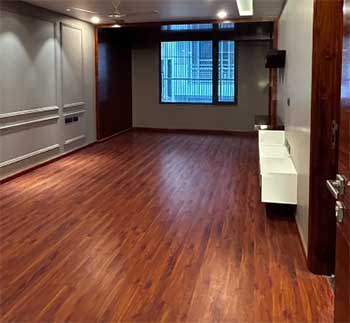
When I decided to renovate my home last year, the flooring was my biggest headache.
I wanted something that looked sharp, could handle my chaotic household (think two kids and a hyperactive dog), and wouldn’t drain my bank account.
After sifting through countless options, I stumbled across Paramount Flooring at a local retailer.
Their display caught my eye—sleek hardwood, vibrant vinyl planks, and some seriously gorgeous porcelain tiles.
I grabbed a few samples, and let me tell you, holding those planks in my hands felt like I was already halfway to a magazine-worthy home.
I went with their RigidCORE Keystone vinyl planks for my living room and kitchen. The installation was a breeze, thanks to the click-lock system, which even a DIY newbie like me could handle. I roped in my brother-in-law for a weekend project, and we had the whole first floor done in two days.
The planks snapped together like puzzle pieces, and the result? A rich, wood-like finish that fooled my friends into thinking I’d splurged on real hardwood. The waterproof feature was a lifesaver, too—spilled juice from my kids? No problem. A quick wipe, and it was like it never happened.
What really sold me was how Paramount balanced looks and toughness. My dog, Max, loves to sprint across the room, nails and all, and I haven’t spotted a single scratch yet. Plus, the price was kinder to my wallet than I expected for something this high-quality.
It’s been a year, and I’m still obsessed with how my floors hold up while looking like they belong in a fancy showroom. That said, no product’s perfect, so let’s get into the good, the not-so-good, and how to keep these floors shining.
The Pros of Paramount Flooring
- Durability That Holds Up

You know that sinking feeling when you drop a heavy pan on your floor and brace for a dent?
With Paramount’s RigidCORE and TimbrCORE lines, I’ve dodged that worry.
These floors are built like tanks.
The vinyl planks, especially, have a thick wear layer that laughs off scratches, scuffs, and spills.
I’ve got a toddler who loves dragging toys across the floor, and there’s not a mark to show for it.
Paramount’s engineered hardwood is no slouch either—it’s stable enough to handle my home’s humidity swings without warping.
If you’ve got a busy household, this durability is a godsend.
- Waterproof Wonder
Spills are a fact of life in my house, whether it’s my kid’s milk or my clumsy coffee pours. Paramount’s RigidCORE vinyl is 100% waterproof, which means I don’t panic when accidents happen. I installed it in my kitchen and bathroom, and it’s been a dream.
Unlike traditional hardwood, which would’ve buckled under a puddle, these planks shrug off moisture. The Keystone and Capstone collections even have realistic wood textures, so you get the hardwood vibe without the water-related stress. It’s perfect for anyone with pets, kids, or a tendency to spill their morning smoothie.
- Stylish and Versatile Designs
I’m a sucker for a good aesthetic, and Paramount delivers. Their catalog is like a candy store for design lovers—hardwood, vinyl, and porcelain options in every shade and texture you can imagine. I went with a warm oak look for my living room, but they’ve got everything from sleek gray tiles to rustic hickory.
The RigidCORE line uses digital imaging to mimic real wood so well that my guests do a double-take. Whether you’re into modern minimalism or cozy farmhouse vibes, you’ll find something that screams “you.” Plus, the variety of plank sizes lets you get creative with patterns like herringbone.
- Easy Installation for DIYers
I’m no handyman, but Paramount’s click-lock system made me feel like one. The RigidCORE and TimbrCORE lines are designed for floating installations, meaning no glue or nails for most projects. My brother-in-law and I tackled 800 square feet in a weekend, and we didn’t even argue (much).
The planks fit together snugly, and the instructions were clear enough for a rookie like me. If you’re hiring pros, the process is even faster, which saves on labor costs. Just don’t try their solid hardwood unless you’re a pro—it’s trickier and needs gluing or nailing.
- Affordable Luxury
Let’s talk money. I was braced for a flooring bill that’d make me cry, but Paramount surprised me. Their vinyl planks range from $2 to $5 per square foot, which is a steal compared to hardwood that can hit $10 or more. Even their high-end engineered hardwood felt reasonable for the quality.
The lifetime warranties on many products gave me peace of mind, too. You’re getting a premium look and feel without the premium price tag, which is a win in my book.
- Eco-Friendly Credentials
I try to make greener choices when I can, and Paramount’s commitment to environmental standards caught my attention. They’re compliant with CARB and Lacey Act regulations, which means their products meet strict environmental and sourcing guidelines.
Their manufacturing partners prioritize sustainable practices, and while I’m no expert, knowing my floors aren’t harming the planet makes me feel a little better about my renovation.
The Not-So-Good Parts of Paramount Flooring
- Limited Online Reviews
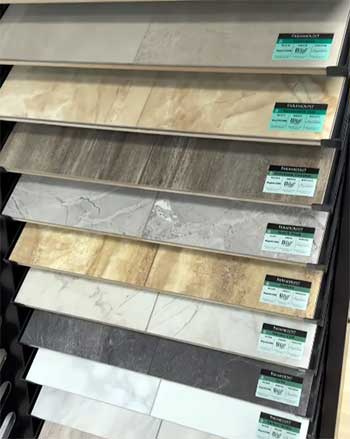
One thing that frustrated me when researching Paramount was the lack of online reviews.
Unlike bigger brands with thousands of customer testimonials, Paramount’s feedback is sparse.
I had to rely on my retailer’s word and a few scattered posts on forums.
While my experience has been great, the lack of widespread reviews might make you hesitate if you’re the type who needs tons of social proof before buying.
It’s not a dealbreaker, but I wish there were more voices out there sharing their stories.
- Sunlight Sensitivity
Here’s a heads-up: if your home gets a lot of direct sunlight, you’ll need to be proactive. Paramount’s vinyl and laminate can fade over time if exposed to intense UV rays. I noticed a slight lightening in one corner of my living room where the sun hits daily.
It’s not drastic, but it’s there. Window treatments or UV-blocking film can help, but it’s an extra step you might not expect. If your space is a sun magnet, you’ll want to factor this in.
- Not as Authentic as Real Wood
Don’t get me wrong—Paramount’s vinyl and laminate look amazing. But if you’re a purist who craves the exact feel of hardwood underfoot, you might notice a difference. The RigidCORE planks I chose mimic wood beautifully, but they’re still vinyl.
They’re softer and quieter, which I love, but they lack that distinct hardwood heft. For me, the trade-off was worth it for the price and durability, but if authenticity is your top priority, you might lean toward their solid hardwood instead.
- Tricky Solid Hardwood Installation
While the vinyl and laminate options are DIY-friendly, Paramount’s solid hardwood is a different story. I considered it for my dining room but backed off when I learned it requires professional installation with glue, nails, or staples.
My DIY ego couldn’t handle the complexity, and hiring pros would’ve bumped up my costs. If you’re set on solid hardwood, be ready for a more involved process compared to their click-lock products.
- Limited Distribution
Paramount’s products aren’t available everywhere. They’re mainly distributed in the Midwest and parts of the U.S., like Illinois, Iowa, and Missouri. I was lucky to find a local dealer, but if you’re outside their range, you might be out of luck.
They don’t sell direct-to-consumer online, so you’ll need to track down a retailer. This limited reach can be a hassle if you’re in a remote area or outside their distribution zone.
Maintenance Tips For Paramount Flooring
- Regular Sweeping and Vacuuming
Keeping your Paramount floors looking fresh is simple, but you’ve got to stay on top of it. I sweep my vinyl planks every couple of days with a soft-bristled broom to catch dust and crumbs. If you’re using a vacuum, skip the beater bar—it can be too harsh.
My robot vacuum has been a lifesaver for quick cleanups, especially in high-traffic areas like my kitchen. Regular sweeping prevents tiny particles from scratching the surface, so make it a habit.
- Damp Mopping Done Right
For deeper cleaning, I use a damp microfiber mop with a mild cleaner made for vinyl or hardwood. Paramount’s care guide warns against soaking the floor, and I learned why the hard way—too much water can seep into seams and cause trouble.
I wring out my mop until it’s barely damp and go over stains gently. Avoid harsh stuff like bleach or ammonia; they’ll dull the finish. A mix of water and a splash of vinegar works wonders for me.
- Protect Against Scratches
My dog’s nails and my kids’ toys could’ve been a nightmare, but I’ve got a few tricks. I put felt pads under my furniture legs to stop scratches when chairs get dragged. For heavy stuff like my fridge, I slide a carpet scrap underneath when moving it.
Area rugs in entryways catch dirt before it hits the floor, and I’ve got a big one in my living room to shield high-traffic spots. If your furniture has casters, go for wide barrel types—they’re gentler.
- Sunlight Protection
To keep fading at bay, I added UV-blocking window film to my sunniest rooms. It’s a cheap fix that makes a big difference. I also use curtains during peak sunlight hours to cut down on UV exposure. If you’ve got a room that’s basically a greenhouse, throw down some stylish rugs in high-sun areas.
They’ll protect your floor and add a cozy vibe. Paramount’s vinyl is tough, but a little prevention goes a long way.
- Avoid Steam Cleaners
I almost made a huge mistake with a steam mop—don’t do it. Paramount’s care guide is crystal clear: steam cleaners are a no-go for their vinyl, laminate, and hardwood. The heat and moisture can mess with the finish or even cause bubbling, as some folks have learned the hard way.
Stick to damp mopping or dry cleaning methods to keep your warranty intact and your floors happy.
- Furniture Protectors
I can’t stress this enough—furniture protectors are your friend. I slapped some adhesive felt pads on my dining chairs and coffee table, and it’s saved my floors from countless dings. If you’ve got heavy pieces, check them monthly to make sure the pads haven’t worn out.
For rolling chairs, I use a clear mat under my desk. It’s not the prettiest, but it keeps my vinyl pristine.
Comparing Paramount To Other Flooring Brands
I’ve put Paramount’s RigidCORE vinyl head-to-head with Karndean’s luxury vinyl, Provenza’s MaxCore, and NuCore Performance to see how they stack up. After testing samples and chatting with friends who’ve tried these brands, here’s how they compare across key factors.
Paramount Vs. Karndean
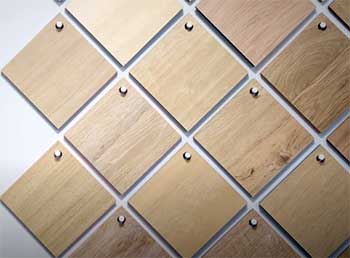
- Durability: Paramount’s RigidCORE vinyl, with its 20-mil wear layer, handles my dog’s nails and my toddler’s toy tantrums without a scratch. Karndean’s luxury vinyl matches that toughness, also boasting a 20-mil wear layer that’s stood up to my friend’s two Labs for years. Both are rock-solid for busy homes, but Karndean feels slightly softer underfoot, which some might prefer for comfort.
- Waterproofing: Spills are no match for Paramount’s 100% waterproof RigidCORE—juice, coffee, you name it, wipes right off. Karndean’s vinyl is equally waterproof, with tight seams that survived a dishwasher leak at my friend’s place. It’s a tie here; both are perfect for kitchens or bathrooms.
- Design: Paramount’s catalog is packed with options—oak, hickory, even porcelain tiles for a marble look. Karndean’s Art Select line edges out slightly with hyper-realistic textures, like hand-scraped wood or stone that looks straight from a quarry. If you’re after unique patterns, Karndean’s got a slight advantage, but Paramount’s variety is still impressive.
- Installation: Paramount’s click-lock system made my DIY install a weekend win. Karndean’s glue-down vinyl, though, often needs pros, which hikes up costs. Paramount’s the clear choice for DIYers.
- Price: Paramount’s $2-$5 per square foot price tag, with a lifetime warranty, fits my budget perfectly. Karndean’s $6-$10 range feels like a splurge, even if the quality’s top-notch. Paramount wins for value.
- Availability: Paramount’s Midwest distribution was a hassle to track down. Karndean’s wider U.S. network makes it easier to find. Karndean takes this one.
Paramount Vs. Provenza
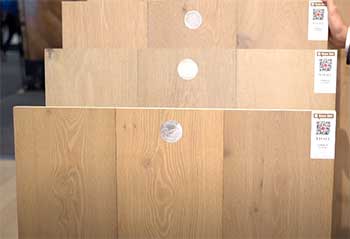
- Durability: Paramount’s RigidCORE laughs off scratches and spills. Provenza’s MaxCore, with its stone composite core, is tough against dents but showed minor wear from heavy impacts in a friend’s home. Paramount edges out for everyday resilience.
- Waterproofing: Both are fully waterproof, but Provenza’s warranty is stricter about standing water—mop up fast or risk issues. Paramount’s more forgiving, making it better for clumsy folks like me.
- Design: Provenza’s artisanal, distressed looks are stunning but limited in color range. Paramount’s broader palette, from rustic to modern, gives you more flexibility. Paramount’s the pick for variety.
- Installation: Both use click-lock systems, but Provenza’s heavier planks need precise cuts, slowing things down. Paramount’s lighter, snappy planks made my install smoother.
- Price: Paramount’s $2-$5 vinyl beats Provenza’s $4-$7 range, and its lifetime warranty trumps Provenza’s 25-year coverage. Paramount’s the budget-friendly choice.
- Availability: Both are hard to find outside specific retailers. Provenza’s stronger online presence gives it a slight edge, but neither is as accessible as big-box brands.
Paramount Vs. NuCore Performance
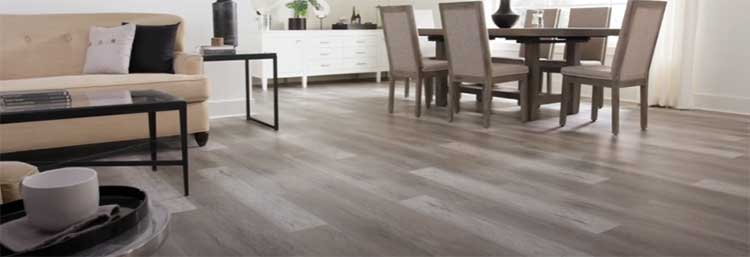
- Durability: Paramount’s 20-mil wear layer outshines NuCore’s 12-mil, which showed scuffs in a friend’s high-traffic hallway. Paramount’s better for rough-and-tumble homes.
- Waterproofing: Both claim 100% waterproofing, but NuCore’s thinner planks can swell at seams if not installed perfectly. Paramount’s tighter click-lock system feels more reliable.
- Design: NuCore sticks to basic wood tones, while Paramount offers bold patterns and tile options. Paramount’s the winner for design lovers.
- Installation: Both are DIY-friendly with click-lock systems, but NuCore’s thinner planks demand a flatter subfloor. Paramount’s a bit more forgiving.
- Price: NuCore’s $2-$4 range is close to Paramount’s $2-$5, but Paramount’s lifetime warranty beats NuCore’s 15-year coverage. Paramount offers better long-term value.
- Availability: NuCore’s exclusive to Floor & Decor, which is great if you’re nearby. Paramount’s limited Midwest distribution is trickier. NuCore wins for accessibility.
Paramount holds its own with Karndean’s luxury, Provenza’s artistry, and NuCore’s budget appeal. It’s the sweet spot for durability, style, and value, especially if you can find a dealer.
Frequently Asked Questions (FAQ)
I’d say yes, based on my experience. Paramount’s RigidCORE vinyl is durable, waterproof, and looks fantastic. It’s held up to my kids and dog without a scratch, and the price is hard to beat at $2 to $5 per square foot. The lifetime warranty adds confidence, though the lack of online reviews might give you pause. If you want a reliable, stylish vinyl option, Paramount’s a solid pick.
Joanna Gaines often features hardwood and luxury vinyl in her projects, but she doesn’t have an exclusive brand. Her Magnolia Home line partners with brands like Kährs for hardwood and Karndean for vinyl, focusing on natural, timeless looks. Paramount’s hardwood and vinyl could easily fit her aesthetic, especially their warm oak and hickory tones, but there’s no direct link to her designs.
SPC (stone plastic composite) flooring, like Paramount’s RigidCORE, is tough, but it’s not perfect. It can fade in direct sunlight, so you’ll need window treatments. It’s also less authentic-feeling than real wood or stone, which might bug purists. Heavy furniture can dent it if you’re not careful, and while it’s waterproof, improper installation can let moisture seep into seams. Lastly, some brands, including Paramount, have limited reviews, making it harder to gauge long-term performance.
There’s no one-size-fits-all answer here. Paramount’s a top contender for value and durability, especially their RigidCORE and hardwood lines. Karndean leads for premium vinyl, while Provenza offers artisanal appeal. NuCore is great for budgets but lacks longevity. It depends on your budget, style, and needs—Paramount’s my pick for affordable quality, but Karndean or Provenza might edge out for their reputation.
Why Paramount Flooring Is Worth It?
I can’t stop raving about Paramount Flooring. It’s transformed my home into a stylish, durable space that handles my family’s chaos with ease. From the waterproof vinyl that saves me from spills to the gorgeous designs that make my guests jealous, it’s a win all around.
The price, ease of installation, and solid warranties seal the deal. If you’re hunting for flooring that delivers without breaking the bank, give Paramount a look—you won’t be disappointed.

I am putting in Paramount Dusty Road in basement for the bedroom and living space. I hope it turns out to be a good selection. The advisor at Millard Lumber in Omaha made the selection to go with the white oak almond stain cabinetry. I like your pic also.